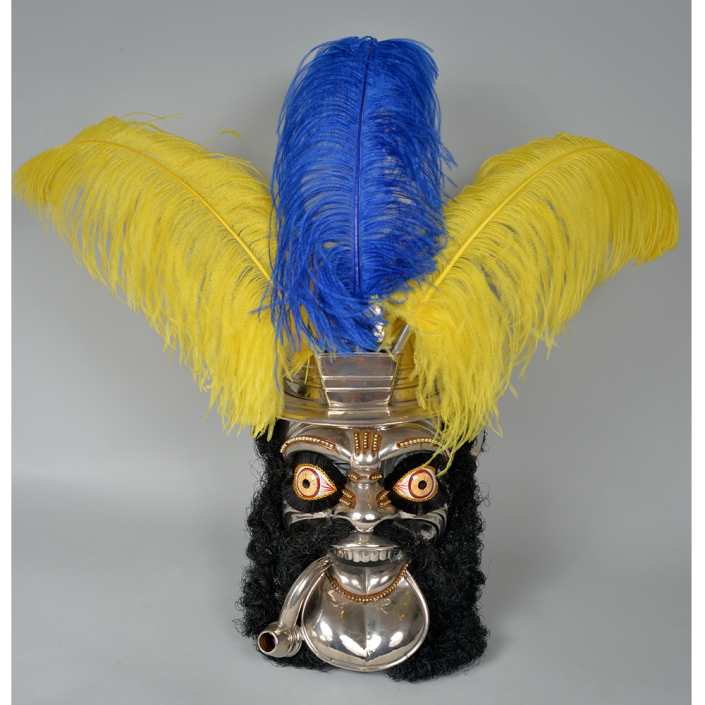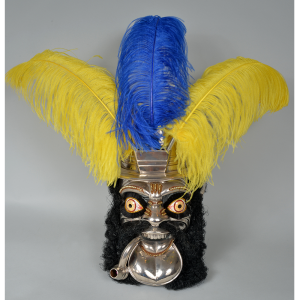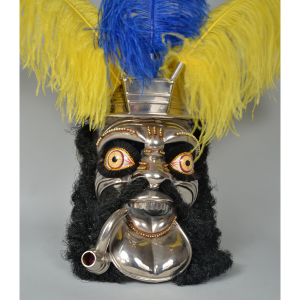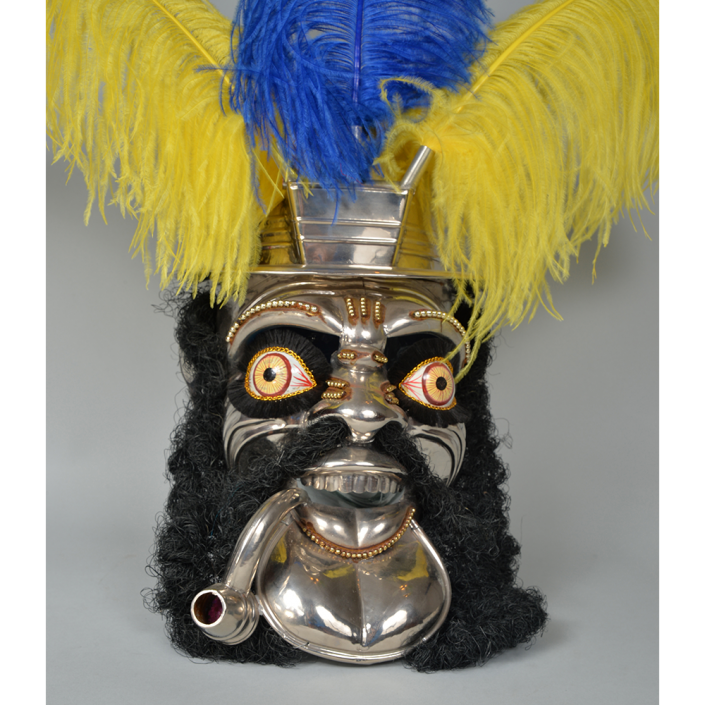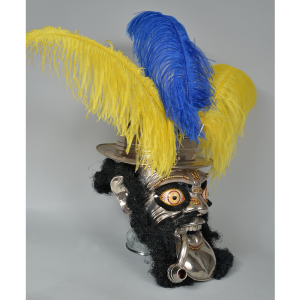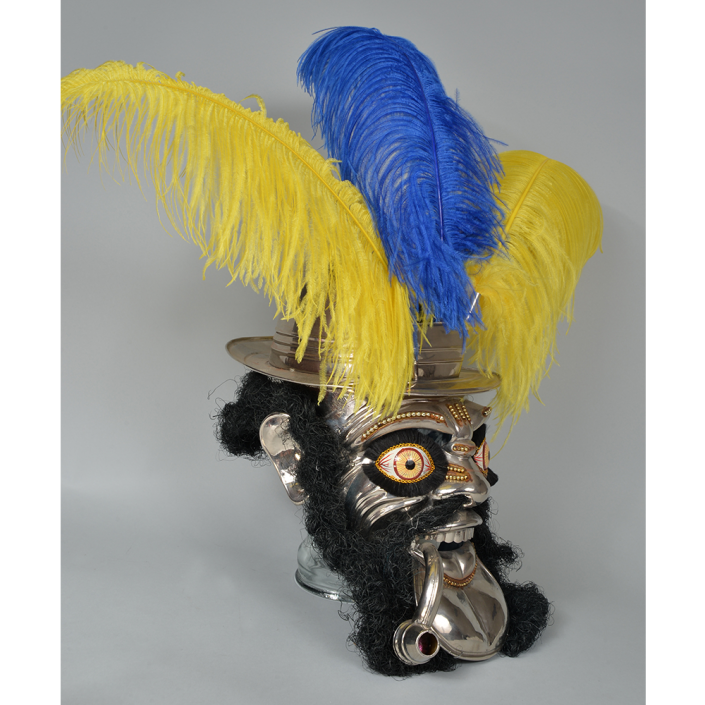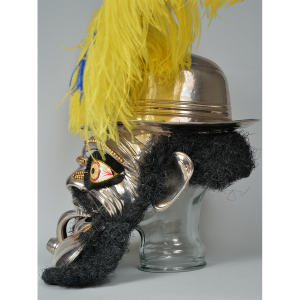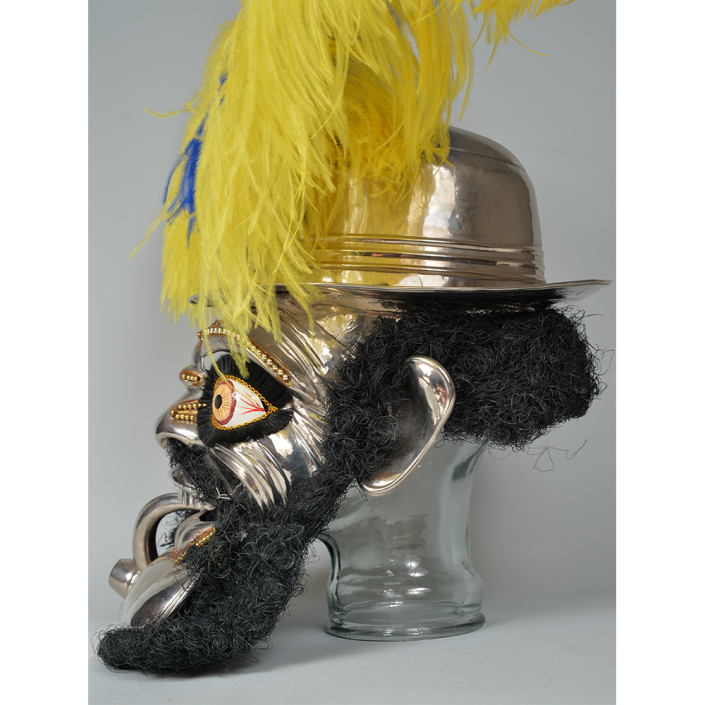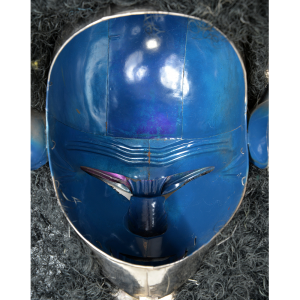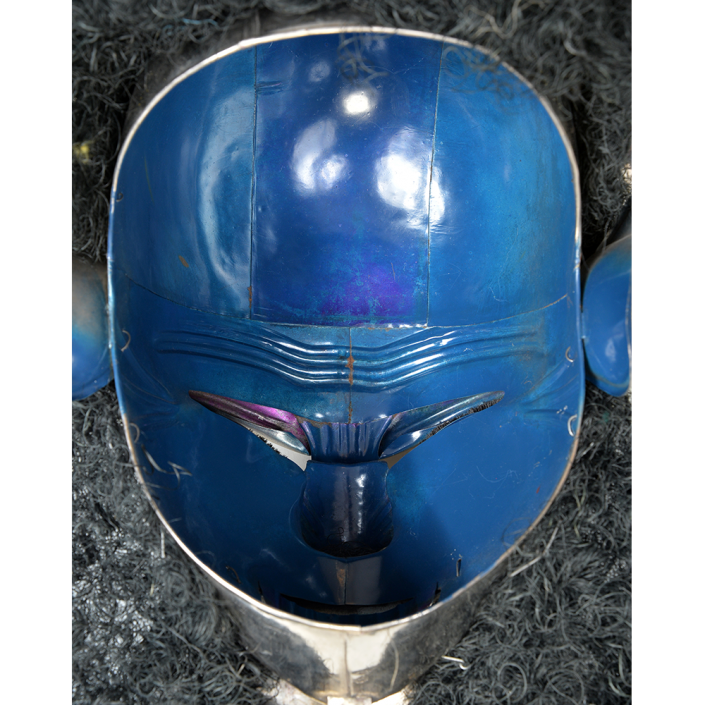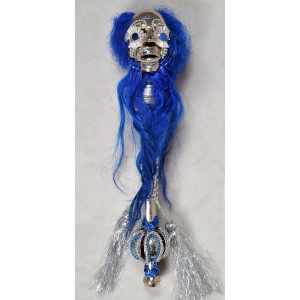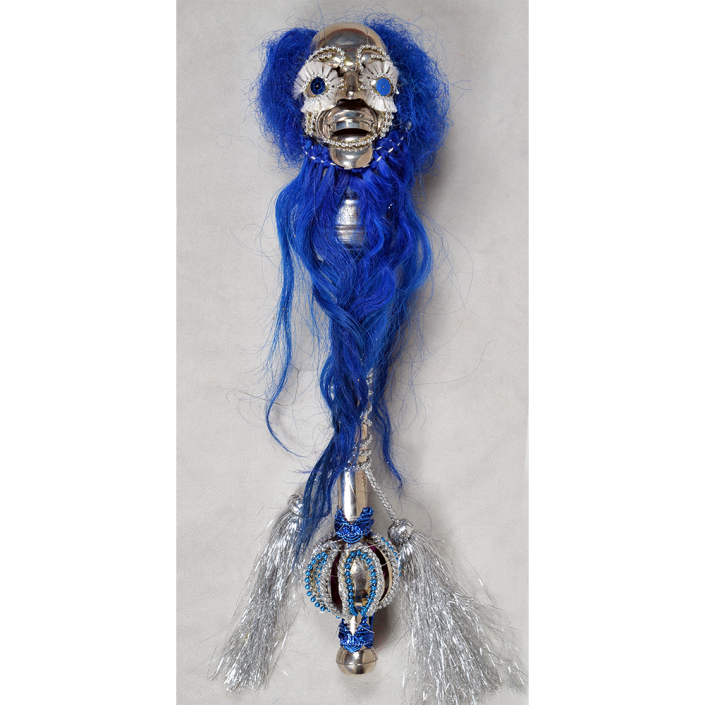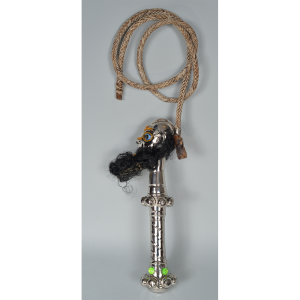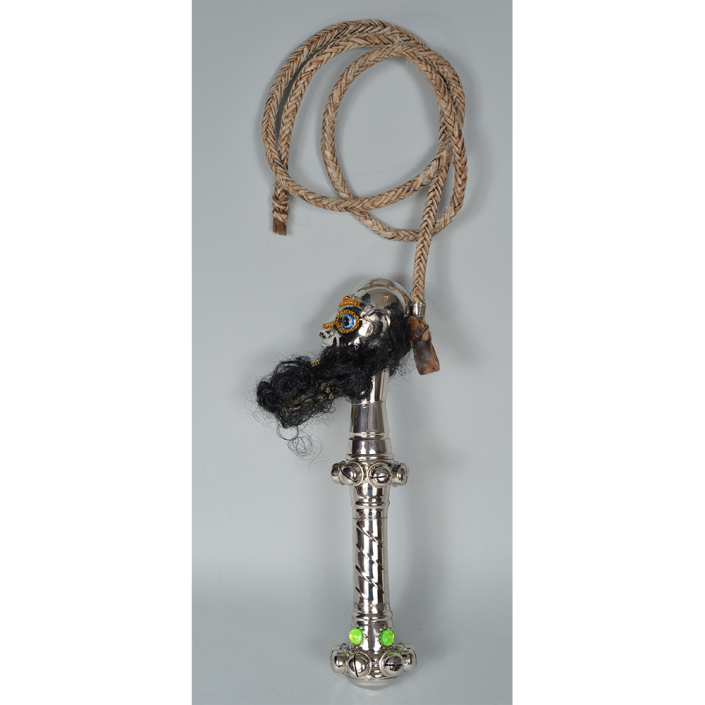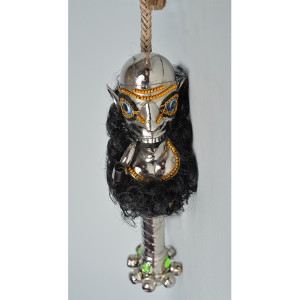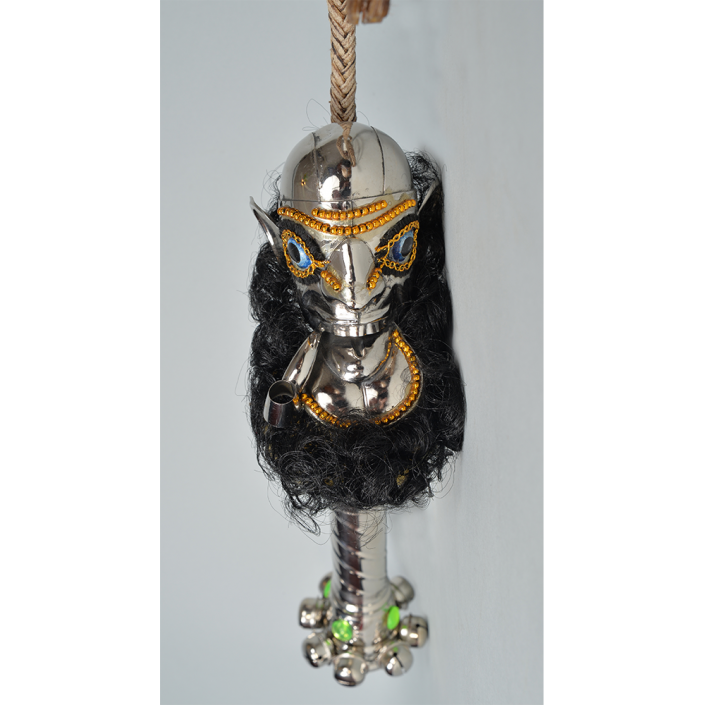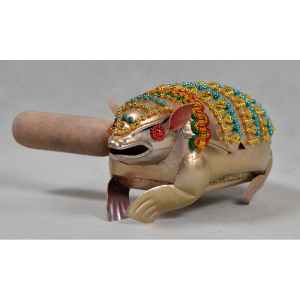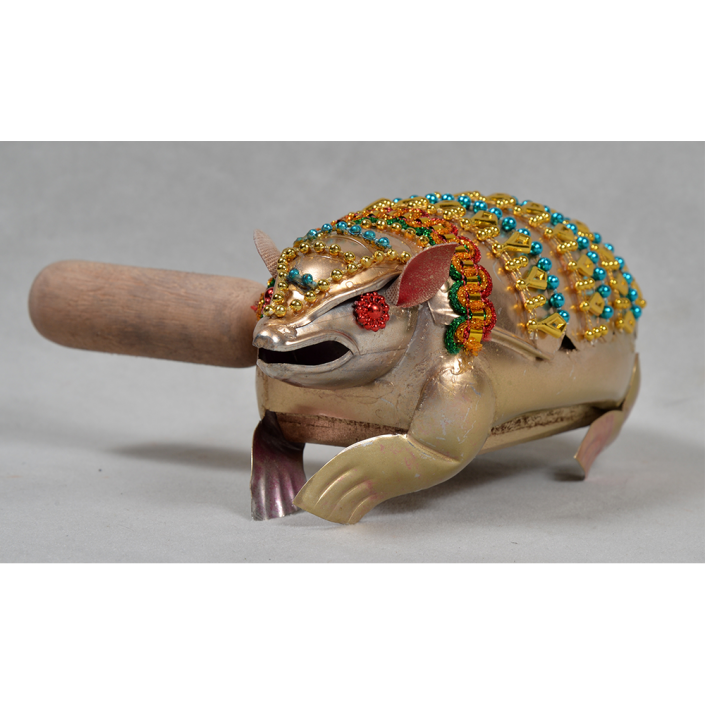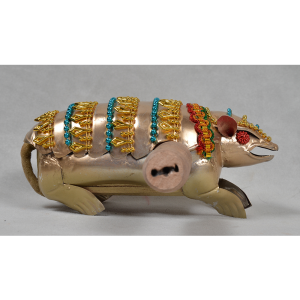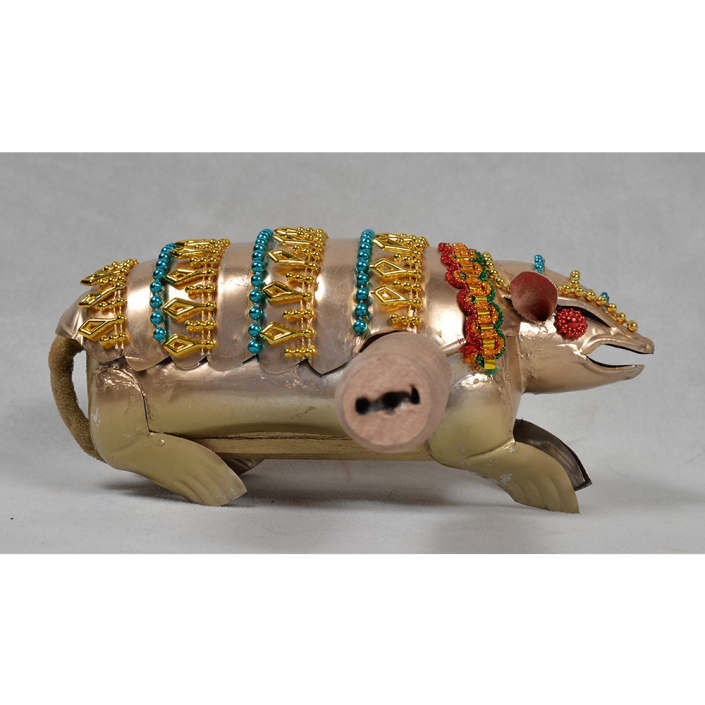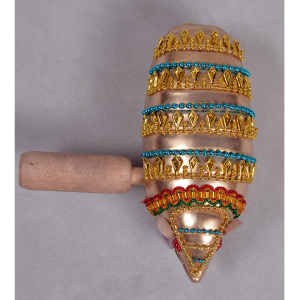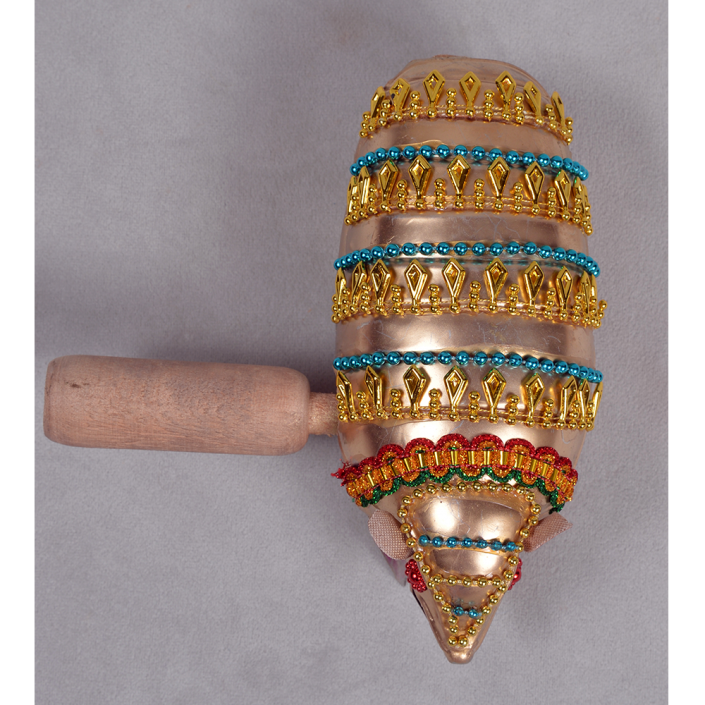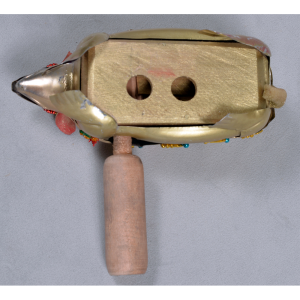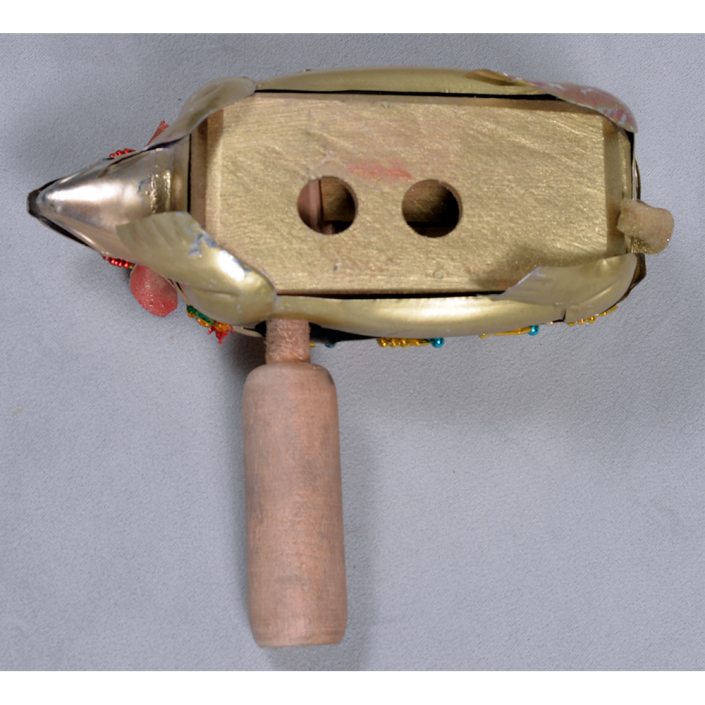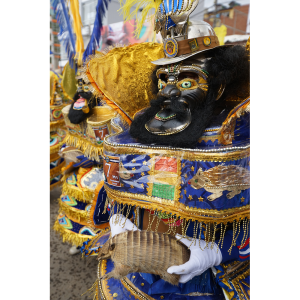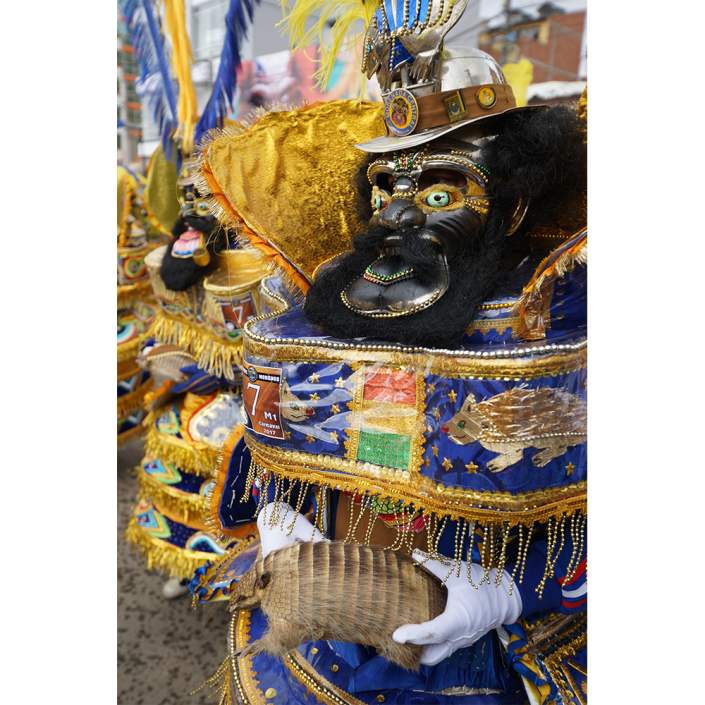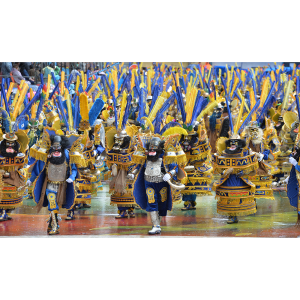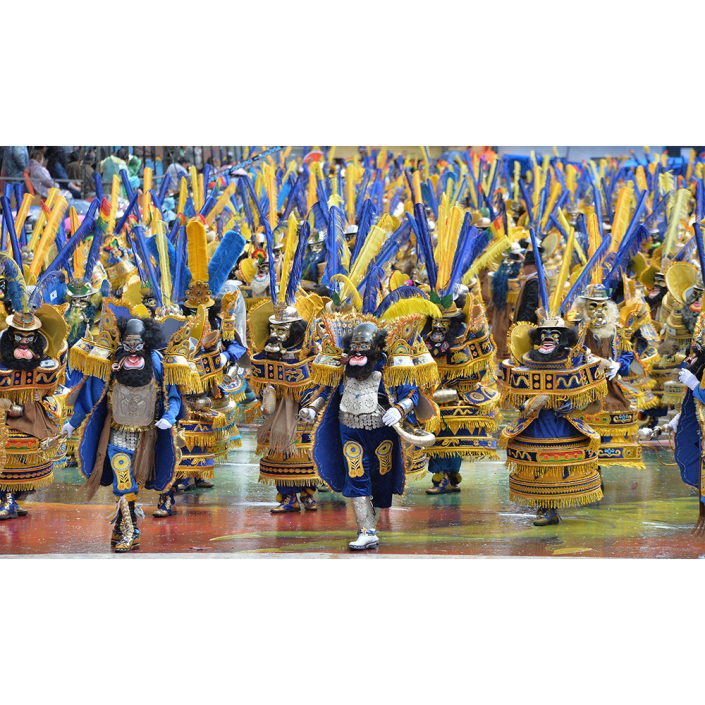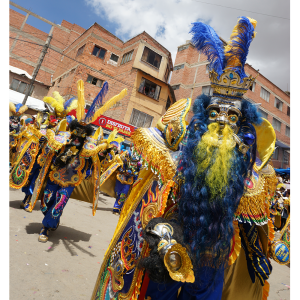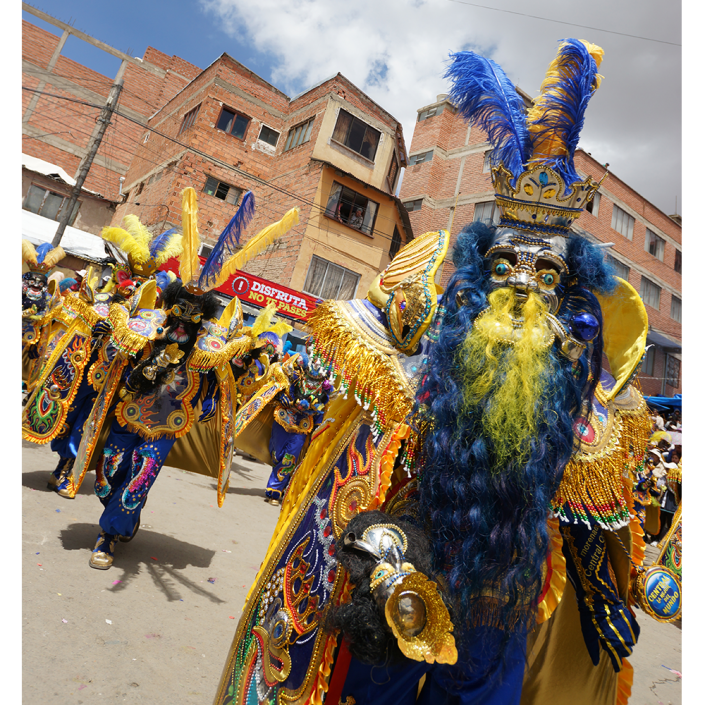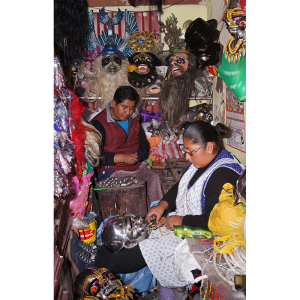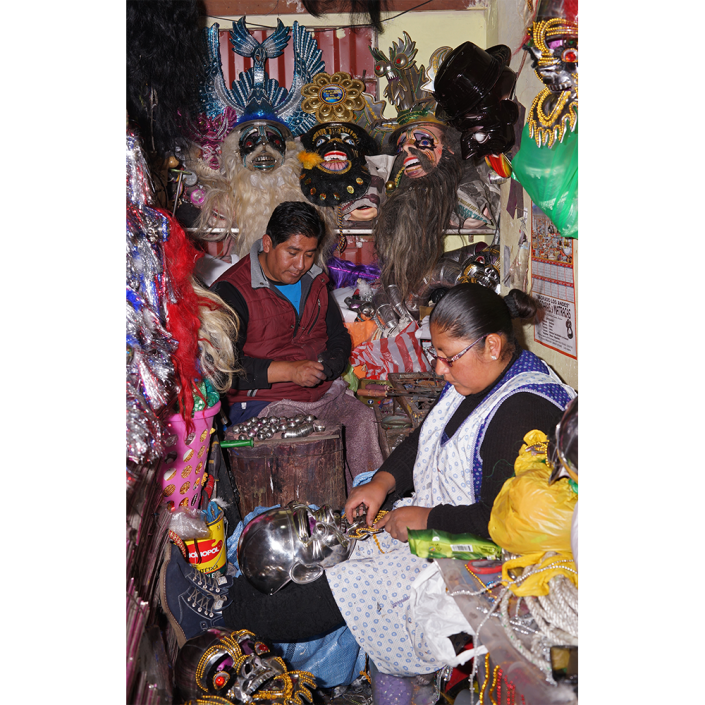TITLE: Moreno (Caporal Tundiqui)
TYPE: helmet mask; accessories
GENERAL REGION: Latin America
COUNTRY: Bolivia
SUBREGION: Oruro
ETHNICITY: Quechua and Aymara
DESCRIPTION: Moreno (Caporal Tundiqui) Mask
CATALOG ID: LABO021
MAKER: Unknown
CEREMONY: Carnival (La Morenada)
AGE: 1980s
MAIN MATERIAL: tin
OTHER MATERIALS: brass; polyester fiber; metal chain; glitter; paint; dyed ostrich feathers
The Morenada (Dance of the Moors) is an annual ceremony in several towns in the Altiplano region of Bolivia, Peru, and northern Chile, usually incorporated into Carnival. The dance includes both male and female Moors dancing in a group with whips, rattles, or scepters. A King of the Moors (Rey de Morenos) presides and coordinates the dance. The dance typically occurs in the course of a parade, with marching bands playing musical scores for the dancers. The precise origins of the Morenada are the subject of debate, with most specialists concluding that the dance was inspired by African slaves brought to Bolivia to work the mines or the subsequent integration of Africans into the Yungas community near La Paz. The morena wears a fancy version of the traditional Bolivian costume with the classic bowler hat.
This mask represents a male moreno, or Moor, made in the 1980s from recycled tin. The Moors obviously never reached Bolivia, but they are represented in honor of the Spanish reconquest of Granada from the Moors in 1492. The morenos dance as a group of males and females, both wear an elaborate and colorful costume. Males carry a scepter, whip, or matraca (rattle) like the ones shown here.
For more on Bolivian masquerade, see Peter McFarren ed., Masks of the Bolivian Andes (La Paz: Editorial Quipus/Banco Mercantil SA, 1993).
